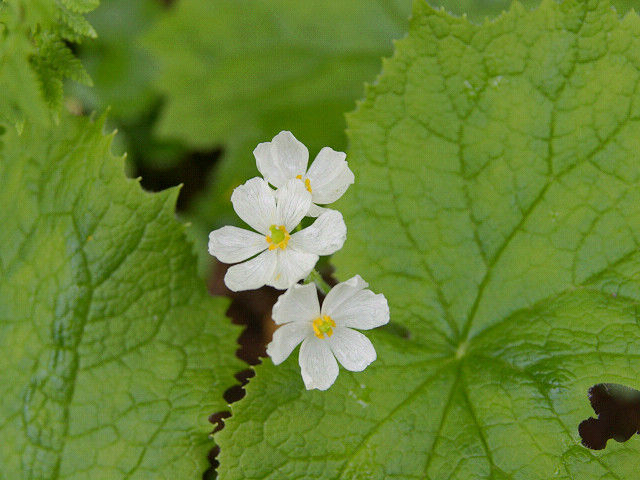Diphylleia grayi is not the most striking of flowers, in fact many people pass by it without even noticing its white, rounded petals. But that’s because they don’t know about its most impressive feature, turning translucent in contact with water.
Native to wooded mountainsides in the colder regions of Japan, “skeleton flowers” bloom from mid-spring to early-summer. Their white petals are completely opaque in dry conditions, but as rain begins to fall, they become almost crystal clear, giving the flower an almost ghostly look. When the rain stops and the petals dry, the skeleton flower goes back to its plain white self.

Photo: E-190/Wikimedia Commons (CC BY-SA 3.0)
Apparently, the flower’s ability to change from white to translucent in contact with water has nothing to do with pigmentation, but rather with the loose cell structure in the plant petals.
“On sunny days the air–liquid interface of the petals causes diffuse reflectance, endowing the petals with a white colour, whilst on rainy days water enters the petals, yielding a water–water interface, increasing light transmission so they turn transparent,” Chemistry World explains.
Apart from wowing both flower enthusiasts and scientists with its ability to change color, the skeleton flower has also inspired nanophotonics researchers to develop a transparent underwater surface that stays clean by repelling oil.
And in case why Diphylleia grayi is commonly known as the skeleton flower, it’s because the veins in its petals look like tiny bones when it is in its ghostly form.






